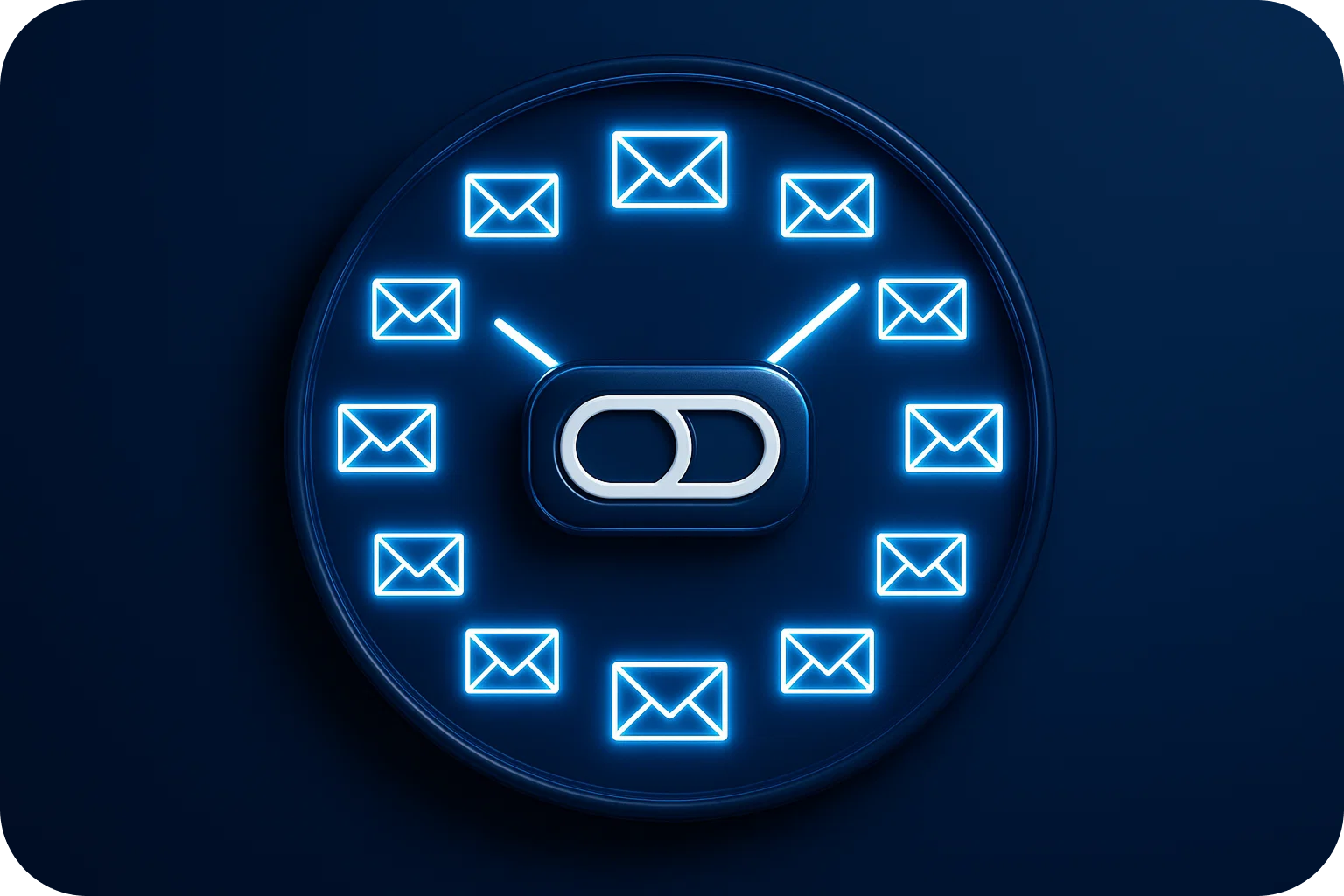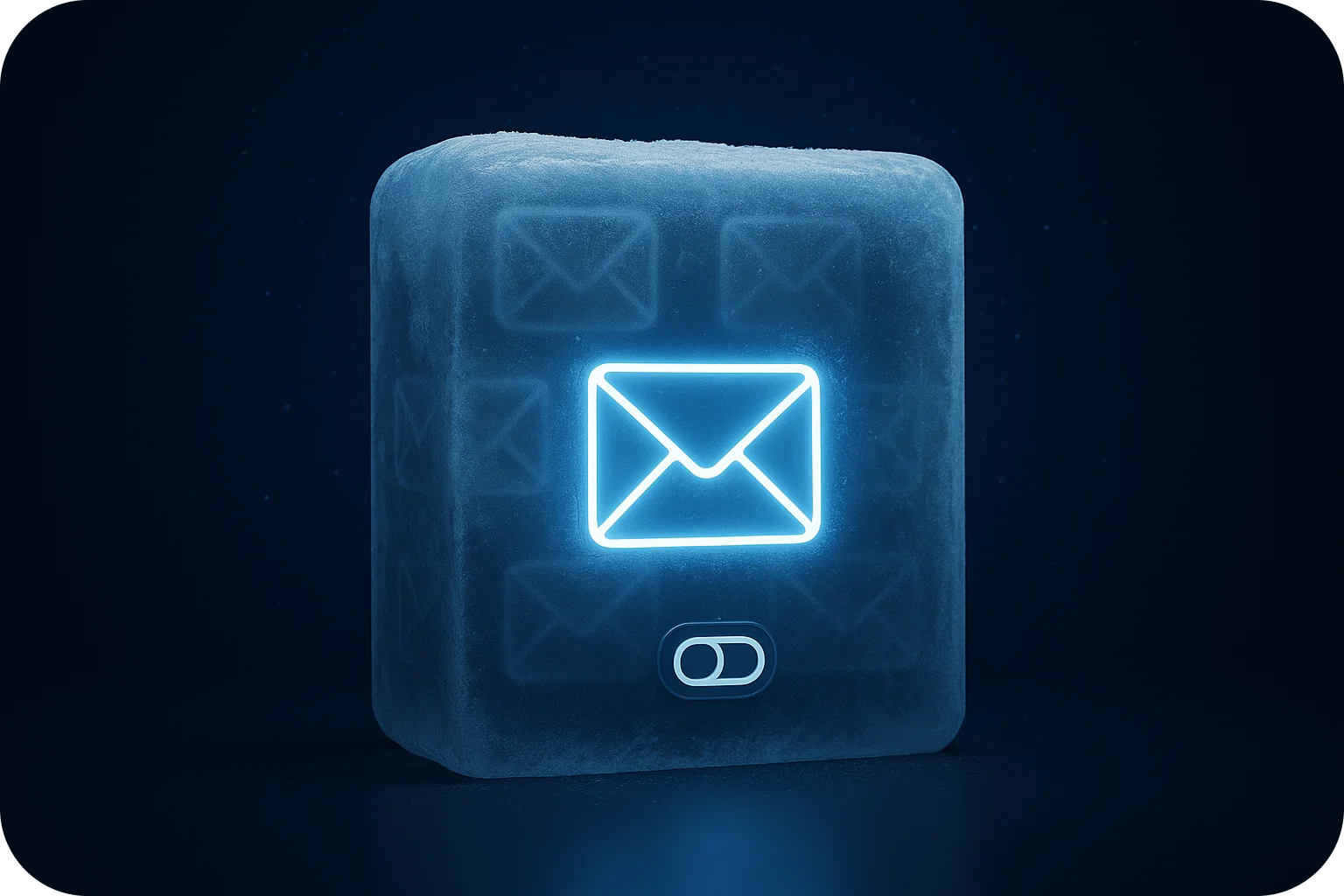Why Your Email Sounds Like a Robot (And 7 Human Touches That Fix It)
.png)
You've crafted what you think is the perfect cold email. You've included the prospect's name, mentioned their company, and outlined your value proposition. You hit send, confident this one will land.
Then... crickets.
The harsh truth? Your email probably sounds like it was written by a robot. And in today's inbox battlefield, robotic emails get deleted faster than you can say "automated outreach."
The good news? Adding authentic human touches to your cold emails isn't rocket science. It's about understanding what makes communication feel genuine and applying seven strategic fixes that transform your outreach from forgettable to conversation-starting.
The Robot Email Epidemic
Before we dive into solutions, let's diagnose the problem. Most cold emails fail because they prioritize efficiency over authenticity. When you're sending hundreds of emails, it's tempting to create one template and blast it to everyone on your list.
The result? Messages that feel mass-produced, impersonal, and transactional. Your prospects can smell a template from a mile away, and their delete button is just one click away.
Research shows that personalized emails deliver 6x higher transaction rates than generic ones. Yet 70% of brands fail to use email personalization tactics effectively. This gap represents your opportunity.
7 Human Touches That Transform Robotic Emails
1. Start With Observation, Not Pitch
Robotic emails jump straight into selling. Human emails start with genuine observation.
Instead of opening with "I noticed your company is growing," try something specific: "Saw your team just launched the new customer portal, the UI looks incredibly clean compared to most B2B tools."
This approach demonstrates you've actually looked at what they're doing, not just scraped their company name from LinkedIn. Dynamic content that references recent company news, product launches, or team expansions shows you're paying attention.
The fix: Spend 60 seconds researching each prospect. Find one specific, recent detail that's genuinely interesting. Reference it naturally in your opening line.
2. Write Like You're Texting a Colleague
Corporate jargon is the fastest way to sound robotic. Phrases like "I'd love to touch base" or "circling back to connect" make readers' eyes glaze over.
Compare these two approaches:
Robotic: "I'd like to schedule a call to discuss how our solution can optimize your email deliverability metrics."
Human: "Quick question—how are you currently handling email deliverability? We've helped companies like yours hit 98% inbox rates, and I'm curious if that's something you're focused on right now."
The second version uses conversational language, asks a genuine question, and includes a specific metric that adds credibility without sounding salesy.
The fix: Read your email out loud. If you wouldn't say it to someone at a coffee shop, rewrite it.
3. Embrace Imperfection
Perfect grammar and flawless formatting can actually work against you. Real humans make small mistakes, use contractions, and occasionally start sentences with "And" or "But."
This doesn't mean sending sloppy emails filled with typos. It means allowing your personality to show through. Use contractions like "you're" instead of "you are." Break grammar rules occasionally for emphasis. Let your authentic voice come through.
The fix: After writing your email, go back and "humanize" it. Add a contraction or two. Break up a long sentence. Make it sound less polished and more genuine.
4. Personalize Beyond First Name
Using {{FirstName}} in your email template is table stakes—everyone does it. Real email personalization goes deeper.
Advanced cold email tactics include:
- Referencing their specific role and challenges
- Mentioning their tech stack (if relevant)
- Noting mutual connections or shared experiences
- Commenting on their content (articles, podcasts, LinkedIn posts)
- Acknowledging their company's recent milestones
Dynamic content that adapts to the recipient's industry, company size, or pain points makes your message feel custom-crafted, not copy-pasted.
The fix: Create 3-5 email variations based on prospect segments. Personalize at least two elements beyond their name in every email.
5. Ask Questions That Show You Care About Answers
Robotic emails ask questions they don't really want answered: "Can I have 15 minutes of your time?" or "Would you be interested in learning more?"
Human emails ask questions that demonstrate genuine curiosity:
- "What's your biggest challenge with [specific problem] right now?"
- "How are you currently handling [relevant process]?"
- "I'm curious—have you considered [alternative approach]?"
These questions invite dialogue rather than requesting permission to pitch. They position you as someone interested in their world, not just someone trying to sell them something.
The fix: Replace yes/no questions with open-ended questions that require thoughtful responses. Make it easy for prospects to engage by asking about their experiences, not your calendar.
6. Time Your Outreach Like a Human
Sending emails at exactly 9:00 AM or midnight screams automation. Real people don't send emails at perfectly rounded times.
Instead of scheduling all your emails for 9:00 AM, send them at 9:07 AM, 9:23 AM, or 10:14 AM. This small detail makes your outreach feel less automated and more authentic.
Similarly, consider the timing of your follow-ups. Waiting exactly 3 days between each follow-up feels robotic. Vary your timing: follow up after 2 days, then 5 days, then a week. This mirrors how real human follow-up actually works.
The fix: Add randomization to your send times. If you're using automation tools, build in 15-30 minute windows rather than exact send times.
7. Include Micro-Commitments, Not Big Asks
Robotic emails ask for 30-minute calls or product demos right out of the gate. Human emails recognize that trust is built gradually.
Start with micro-commitments:
- "Would a 2-minute overview be helpful?"
- "Want me to send you a quick example?"
- "Should I share what worked for [similar company]?"
These small asks feel less threatening and more conversational. They give prospects an easy way to engage without committing significant time or mental energy.
The fix: Replace big asks with small, specific next steps. Make it ridiculously easy for prospects to say yes.
Putting It All Together
Transforming robotic emails into human conversations isn't about abandoning automation; it's about using technology to enable personalization at scale.
The most effective cold email tactics combine:
- Strategic email personalization that goes beyond first names
- Dynamic content that adapts to prospect segments
- Authentic voice that sounds like a real person
- Timing and follow-up patterns that feel natural
When you implement these seven human touches, something remarkable happens: your open rates climb, your response rates improve, and your conversations become more meaningful.
The Bottom Line
Your prospects receive dozens of robotic emails every day. They've developed sophisticated filters for detecting mass outreach, and they're ruthless about hitting delete.
But they're also human. They respond to genuine interest, thoughtful observation, and authentic communication. When your email sounds like it was written by a real person who actually cares about their challenges, you break through the noise.
The question isn't whether you should personalize your cold emails, it's whether you can afford not to. In a world where 98% deliverability and inbox placement matter more than ever, the emails that sound human are the ones that get read, get responses, and get results.
Start with one human touch. Then add another. Before long, your cold emails won't just reach inboxes, they'll start conversations.
More articles
Get started now




%201.png)





